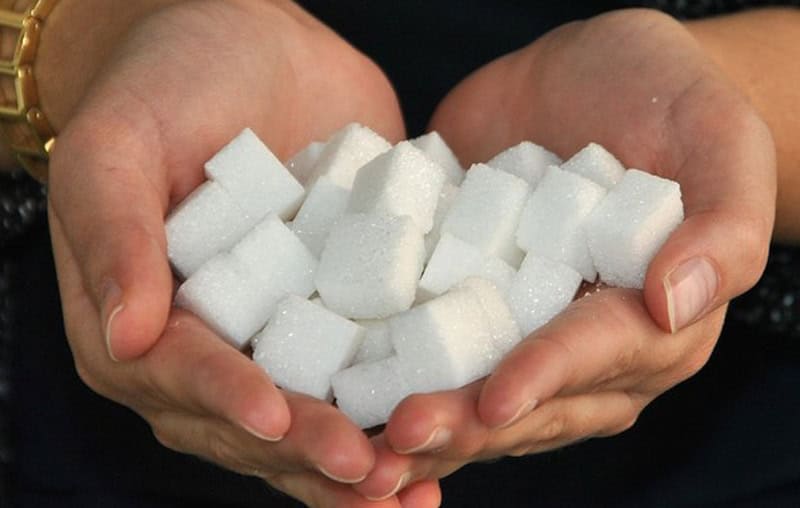Producers consider beet sugar vs cane sugar when choosing sweeteners for different confectionery items.
Discover the Uses and Perks of Beet Sugar Vs Cane Sugar in Your Daily Diet Plan
Discovering the unique high qualities of beet and cane sugar discloses greater than simply their sweetening capabilities; it highlights their one-of-a-kind influences on health and wellness and cookeries. Beet sugar, known for its refined taste, is typically preferred in fragile treats, whereas cane sugar, with its tip of molasses, includes richness to robust meals. Each kind holds its very own dietary account and glycemic effects, welcoming a much deeper understanding of their duties in a balanced diet plan and lasting intake techniques.
Beginning and Production Processes of Beet and Cane Sugar

The unique environments and soil types needed for expanding sugar beets and sugarcane add to distinctions in their growing methods and geographical distribution, affecting the business economics and sustainability of their production. beet sugar vs cane sugar.
Nutritional Contrast Between Beet Sugar and Cane Sugar
Regardless of originating from various plants, beet sugar and cane sugar are nutritionally really similar, both mainly including sucrose. Each provides about 4 calories per gram, converting to roughly 16 calories per tsp. Structurally, both sugars are composed of roughly 99.95% sucrose, with marginal amounts of various other substances like moisture and trace element, which do not dramatically change their dietary profiles.

Ultimately, when picking between beet sugar and cane sugar based upon dietary web content alone, both offer the same benefits and downsides as they are essentially forms of the same particle-- sucrose, offering fast power without other nutrients.
Influence On Health: Glycemic Index and Caloric Content
Checking out further right into the results of beet sugar and cane sugar on health and wellness, it is crucial to consider their glycemic index and caloric web content. Both sugars are categorized as sucrose, which contains glucose and fructose. This composition leads them to have a similar influence on blood glucose levels. The glycemic index (GI) of both beet and cane sugar is around 65, classifying them as site high-GI foods, which can trigger quick spikes in blood sugar levels. This is a critical element for people taking care of diabetes mellitus or those trying to support their power levels throughout the day.
Each kind of sugar contains around 4 calories per gram, making their caloric content equivalent. For those keeping an eye on calorie consumption, specifically when managing weight or metabolic health and wellness conditions, comprehending this equivalence is important (beet sugar vs cane sugar). Nonetheless, extreme intake of any kind of high-calorie, high-GI food can add to health concerns such as weight problems, heart disease, and insulin resistance.
Environmental and Economic Considerations of Sugar Manufacturing
Beyond health and wellness influences, the manufacturing of beet and cane sugar also elevates substantial environmental and economic problems. Sugar beet growing often tends to need cooler environments and has a lower geographical footprint compared to sugar cane, which flourishes in tropical areas. Both crops are intensive in terms of water usage and land profession, potentially leading to logging and water scarcity. Financially, the worldwide sugar market is highly unstable, influenced by adjustments in worldwide profession policies and aids. Lots of countries incentivize sugar production via financial backing, skewing market rates and affecting small farmers adversely.
In addition, using chemicals and plant foods in both beet and cane sugar growing can bring about Read Full Article dirt degradation and air pollution, more influencing biodiversity and neighborhood water bodies (beet sugar vs cane sugar). The choice in between cultivating sugar beet or cane often rests on regional ecological conditions and economic variables, making the sustainability of sugar production a complex concern
Culinary Applications and Taste Distinctions
While the ecological and financial elements of sugar production are indeed significant, the selection in between beet and cane sugar likewise influences culinary applications and taste accounts. Beet sugar, obtained from the sugar beet plant, is understood for its extremely neutral preference. This makes it a flexible component in baking, where it does not modify the taste of other components. It liquifies promptly and is perfect for usage in cakes, cookies, and breads.
Walking cane sugar, article drawn out from sugarcane, frequently retains molasses traces, which present a distinctive richness and deepness. This mild molasses flavor enhances the complexity of baked items, sauces, and marinates. It is particularly preferred in things where a caramel touch is desired, such as in brownies or gingerbread. The small variant in moisture material in between beet and cane sugar can impact the appearance and consistency of recipes, making cane sugar a preferred choice for certain dishes that benefit from its special homes.

Final Thought
To conclude, both beet and cane sugar have distinctive beginnings and production processes, offering comparable dietary profiles with minor distinctions in salt material and flavor. While their impact on health, specifically regarding glycemic index and calories, is comparable, the selection in between them usually steams down to ecological, economic elements, and particular culinary needs. Understanding these aspects can assist customers in making educated decisions that align with their health goals and taste choices.